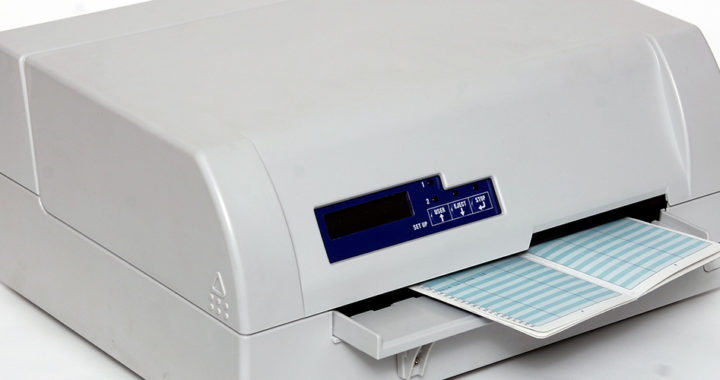A dot matrix printer is a printer device based on impact printing. It uses a print head that moves back and forth and prints by impact or by striking an ink-soaked cloth ribbon against the surface of the paper. Compared to inkjet printers or laser printers, dot matrix printers are more popular in specific settings that require cost efficiency.
The Pros: Advantages and Applications of Dot Matrix Printer
One of the advantages of a dot matrix printer is that it has the lowest printing cost per page, especially when compared to an inkjet printer or laser printer. Hence, it is applicable in settings in which low printing cost is more important than quality.
Users can also maximize the ink ribbon because the printer would not suddenly stop halfway through the printing even though the ink is running out. Take note that most inkjet and laser printers would stop partway if they detect low ink or toner volume.
The ink ribbon does not easily dry out as well. Hence, when compared to the ink cartridge of an inkjet printer, it has a longer storage life or can be left idle for longer periods.
Overall affordability is another advantage. Dot matrix printers are cheaper than their inkjet and laser printer counterparts. They also have a low repair cost because of the simpler mechanical configuration and availability of components.
More specific types of dot matrix printers based on impact printer can print on multi-part stationery or make carbon copies.
The Cons: Disadvantages and Limitations of Dot Matrix Printer
A notable disadvantage of dot matrix printing is noise. The noise comes from the pins or typeface striking the ribbon to the printer. Hence, it is not ideal in settings where distractions can affect the productivity of the workforce.
These printers can only print lower-resolution graphics. They are not suitable for printing both graphic-intensive and color-intensive printouts. The difference in print quality is obvious when printouts are compared with printouts from inkjet and laser printers.
Printing time is also another drawback. A typical unit prints slow because of the underlying impact printing mechanism. Thus, despite its low printing cost, it is not practical for high-volume printing, in which time is as crucial as cost.
Note that these printers can support fanfold paper with tractor holes and continuous papers. Using a single-sheet paper may require wounding in and aligning by hand, which can be time-consuming and translates further to lower paper feed reliability.
Summary and Takeaways: The Pros and Cons of Dot Matrix Printers
The following is the summary of the advantages and uses of dot matrix printers:
• It has the lowest printing cost per page when compared to inkjet and laser printers. It is ideal in situations in which low printing cost is more important than quality.
• An ink ribbon has longer storage and idle life. It does not dry out easily. The printer would also not stop midway through printing even though the ink is running low.
• These printers are also more affordable. They also have low repair costs.
• More specific types of dot matrix printers based on impact printer can print on multi-part stationery or make carbon copies.
• There is also support for fanfold paper with tractor holes and continuous papers.
Below is the summary of the disadvantages and limitations of these printers:
• A dot matrix printer creates considerable noise while in operation. It is not suitable in settings that require minimal distractions.
• The print resolution is also low. It is suitable for printing both graphic-intensive and color-intensive printouts.
• A typical unit prints slower than inkjet and laser printers. It is not ideal in settings that require high-volume printing.
• Using a single-sheet paper may require wounding in and aligning by hand, which can be time-consuming.





